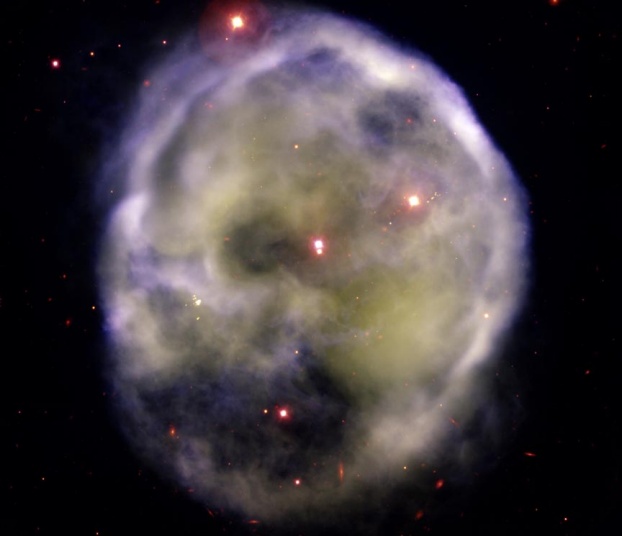Explanation: Appropriately nicknamed "the Skull Nebula", planetary nebula NGC 246 really does surround a dying star some 1,600 light-years away in the constellation Cetus. Expelled over a period of thousands of years, the lovely, intricate nebula is the outer atmosphere of a once sun-like star. The expanding outer atmosphere is interacting with the gas and dust in the interstellar medium, while the star itself, the fainter member of the binary star system seen at the nebula's center, is entering its final phase of evolution, becoming a dense, hot white dwarf. Star and nebula are moving rapidly toward the top of the detailed view, as suggested by the nebula's brighter, upper, leading edge. The sharp image spans just over 2.5 light-years at the estimated distance of NGC 246 and also reveals distant background galaxies, some visible right through the nebula along the bottom.
1999 2000 2001 2002 2003 2004 2005 2006 2007 2008 2009 2010 2011 2012 2013 2014 2015 2016 2017 2018 2019 2020 2021 2022 2023 2024 2025 |
Январь Февраль Март Апрель Май Июнь Июль Август Сентябрь Октябрь Ноябрь Декабрь |
NASA Web Site Statements, Warnings, and Disclaimers
NASA Official: Jay Norris. Specific rights apply.
A service of: LHEA at NASA / GSFC
& Michigan Tech. U.
|
Публикации с ключевыми словами:
planetary nebula - binary star - Планетарная туманность - двойные звезды
Публикации со словами: planetary nebula - binary star - Планетарная туманность - двойные звезды | |
См. также:
Все публикации на ту же тему >> | |
